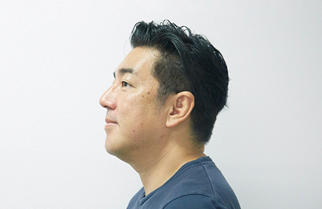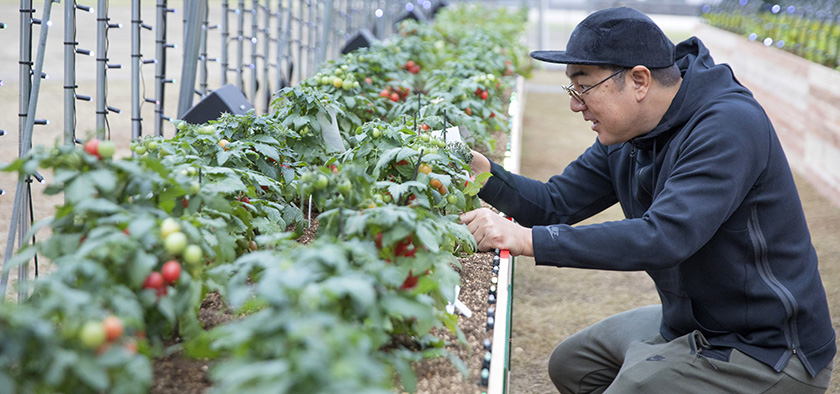
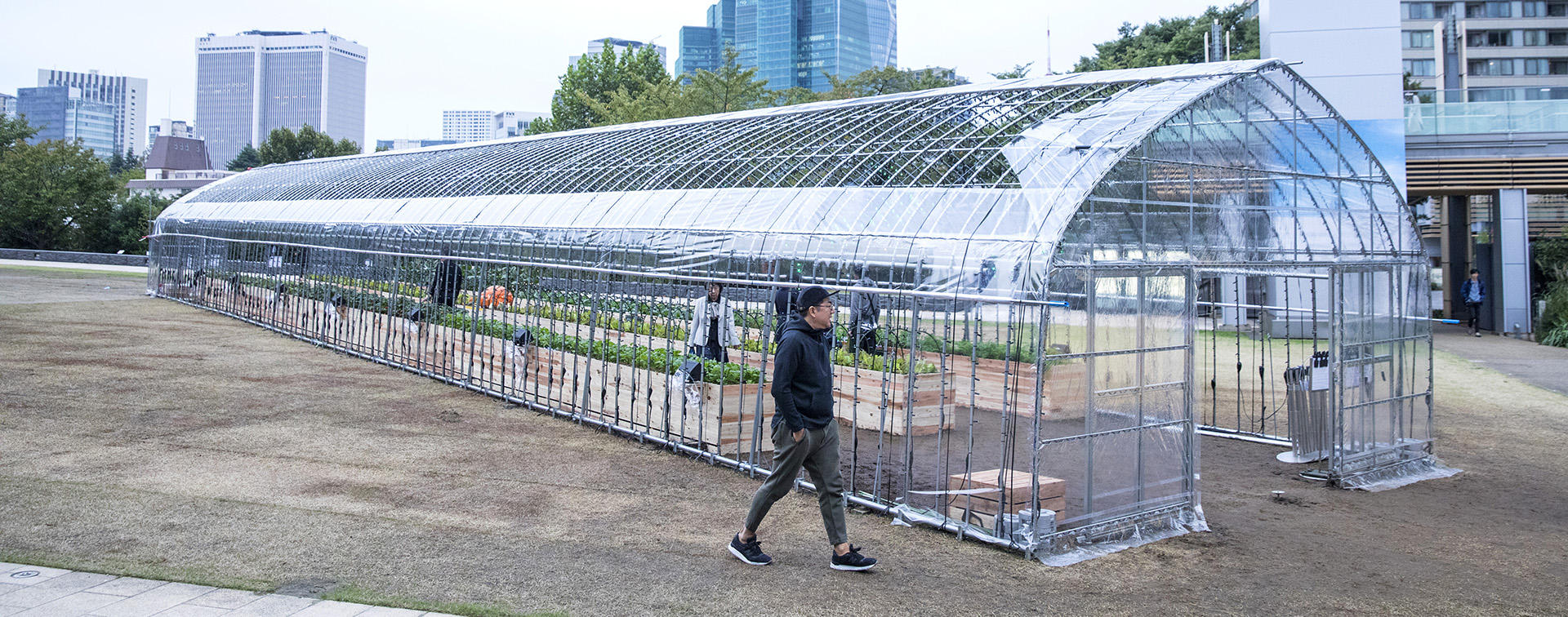
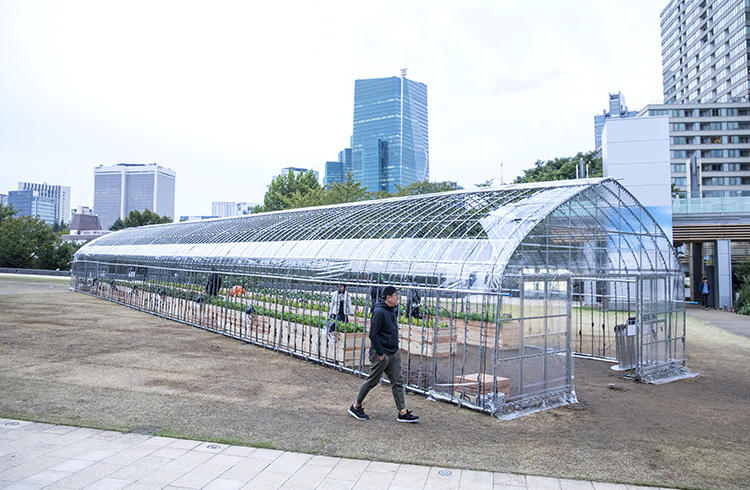
Touch a city, talk to a city
Conduction meetings and watching movies in a self-driving car A future that turns mobility into a productive time
Naoki Ito is the creative director of the creative lab "PARTY." "PARTY" creates interactive communication without language and contacts between cities and people. He has done creative direction for Nike, Google, Sony, MUJI etc. He also exhibited 'Digital Vegetables - by PARTY' at 'Tokyo Midtown DESIGN TOUCH' in 2017, which combined vegetables and technology. We asked Mr. Ito what we should do to make Tokyo and Roppongi attractive in the future.
Exaggerate the sense and redefining 'touch'
I live in Hayama and I grow more than 100 kinds of vegetables there. The environment in Hayama is not the best for all the different types, but I like to experiment by putting some plants outside that are typically suited to be grown inside. They would show various faces to me. Sometimes some plants looked fine but when I touched them, I could feel they were not fine. Sometimes you understand things that you cannot put in words or see with your eyes by touching them.
I designed my installation 'Digital Vegetables' for "Tokyo Midtown DESIGN TOUCH 2017" with the intention to have the audience feel the relativity of 'non-language' and 'interactive' by the primitive type of communication, 'Touch,' which was the theme of the event.
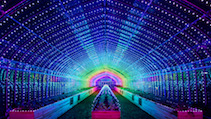
Digital Vegetables by PARTY
A huge greenhouse PARTY exhibited in the Grass Square of Tokyo Midtown for "Tokyo Midtown DESIGN TOUCH 2017". When you touch the vegetables planted in the greenhouse, the LEDs light up in various colors. You experience the interactive communication without words with vegetables, which is usually just an object you eat.
Date: October 13 - November 5, 2017
Place: Grass Square, Midtown Garden, Tokyo Midtown
http://www.tokyo-midtown.com/jp/event/designtouch/
When you eat vegetables they look very different from when you harvest them. If you see vegetables growing, some have colors to get the pollen carried, others have furry leaves, and so on. You feel their vitality to leave their seeds.
You can get information by touching, but the information changes by how you touch. If you touch softly, the leaves sway; if you touch with more force, the stem pushes you back. I find touching is a profound action.
However, there are not many chances to experience communication without words through touching. We do not think about an eggplant's 'survival strategy' when we eat it. Moreover, we do not have vegetable fields in the city.
I wanted to create an interactive conversation by exaggerating the touching communication in 'Digital Vegetables'. If you become more aware about vegetables, you may get a different feeling when you buy an eggplant for dinner in the underground supermarket on your way home.
Once you get that feeling, your everyday life may change. You may wonder "Was this mug cup so thick?" when you hold it differently, even if you have been using it every day. You get different information by how you touch, and you may become to like it more, or less, because of the new information. Touching creates the interactive conversation.
Conversation without words is the ultimate communication.
I got interested in interactive communication when I did the art direction for the installation event 'BIG SHADOW PROJECT' to promote the software 'BLUE DRAGON' for XBOX360 in 2006. We rented out a car park and projected the enlarged shadows of passers-by onto the building wall. It was just your shadow getting huge, but people really got into the feeling of themselves become giant. I felt the possibility of the communication without words when I saw the people's excitement.

BIG SHADOW PROJECT
An image installation event held in Shibuya to promote the software 'BLUE DRAGON' for Xbox 360™. Shadows of passers-by were enlarged to 40 meters tall, variously posed, and sometimes changed into a shadow of a 'dragon'. Ito did the art direction.
Communication without words is like playing catch with your kids. Even if the parents do not say a word, they put their heart into the ball they throw, and the kids catch it. Without words, it is the ultimate communication.
Newborn babies do not know words, so they communicate by crying or gripping their Mother's hand. Communication without words is primitive and ultimate.
However, the communication must be interactive. To play catch, if you do not throw the ball back, it would not be communication.

The 'gap of GPS' makes communication more intriguing.
When you want to use interactive technology, you also need to deal with its weakness. There used to be an application called 'Sekai Camera' which put an 'Air Tag', the additional information of the photo, over a photo you took with a smart phone using GPS. But the UI became chaotic with all the real-life information and the information on the web mixed up. It failed because of the low accuracy of GPS.
Sekai Camera
A free augmented reality application that worked on iPhone and Android created by Tonchidot corporation. When you capture an image using the digital camera in your iPhone or Android, you would get additional information, called 'Air Tags,' over the image in words, pictures, and sounds. Users could add the 'Air Tag's or share them with other users. The service was terminated on 22 January 2014.
On the other hand, 'Pokemon GO' takes advantage of the technology's weakness. Monsters of 'Pokemon GO' appear using information of GPS. But there are gaps, just as it happened to Sekai Camera. 'Pokemon GO' was developed taking the gap of GPS into calculation.
I am a heavy user of 'Pokemon GO' and I often go to Shinjuku Gyoen National Garden to catch monsters. But the garden closes at 4:30, and you cannot meet monsters inside. However, because of the gap of GPS, some monsters pop up outside if you wait patiently.
Then, people rush to that point. It is a surreal sight if you are an observer. But I am one of them. It is a very interactive invention, don't you think?
Fusion of the place and the media in the future.
Design and communication change by technology. The successful launch of Quasi-Zenith Satellite System, 'Michibiki', will increase the accuracy of GPS. 'Pokemon GO' was created with the gap of GPS taken into consideration. In the future, services will be created presuming no gap of GPS.
If GPS can recognize a place accurately, we can put pin-point information on the smartphone. You will have the access to such detailed information as 'who used to sit on this chair and what he/she saw from there' in a second. Detailed information about places will be put in the memory and there will be the fusion of the place and the media in the world.
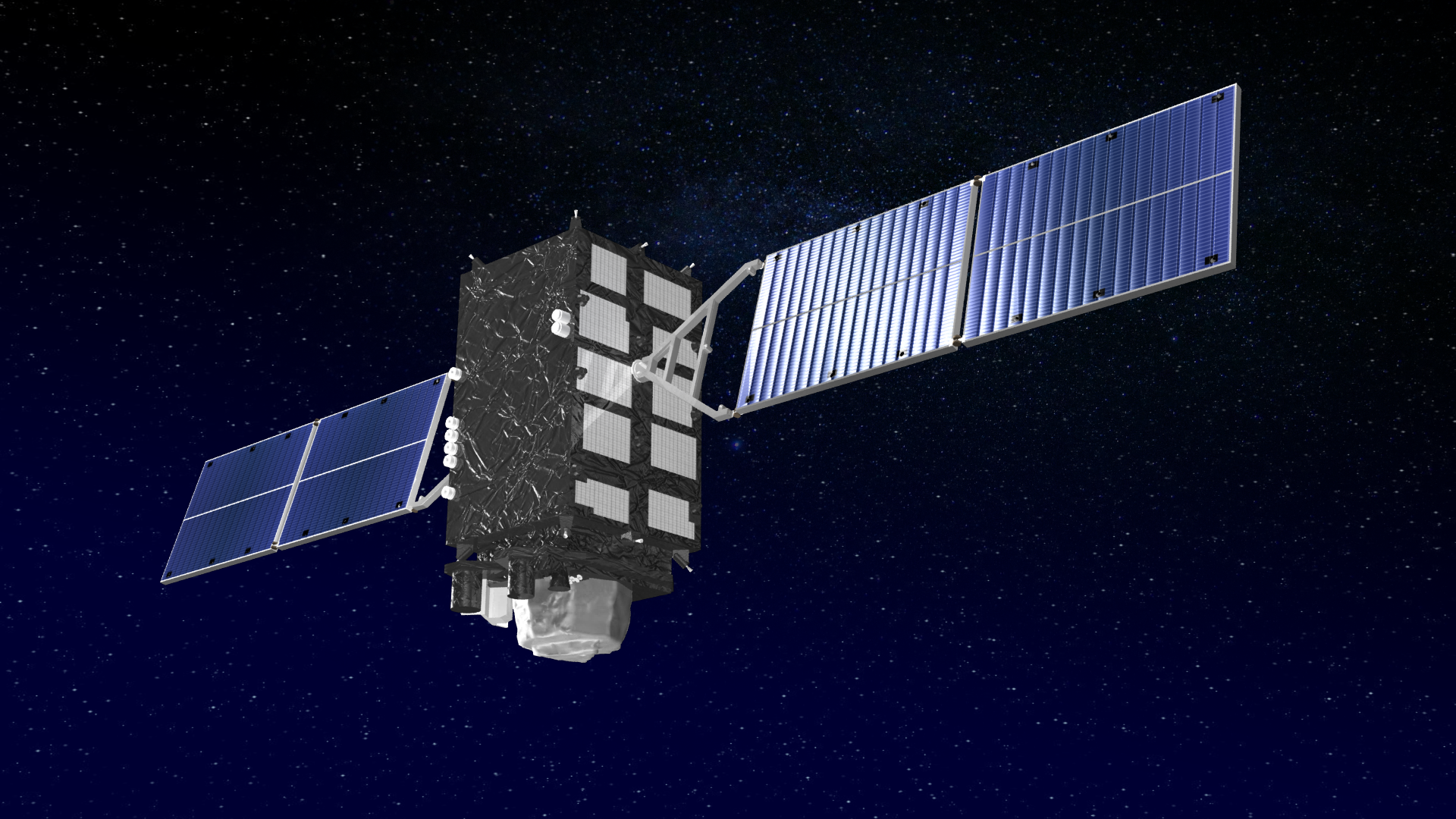
Michibiki
Regional Navigational Satellite System mainly used for Japan area. There are 4 satellites right now (soon to be 7) working with many location based applications in Japan. The development of location information business is expected as the accuracy of GPS increases.
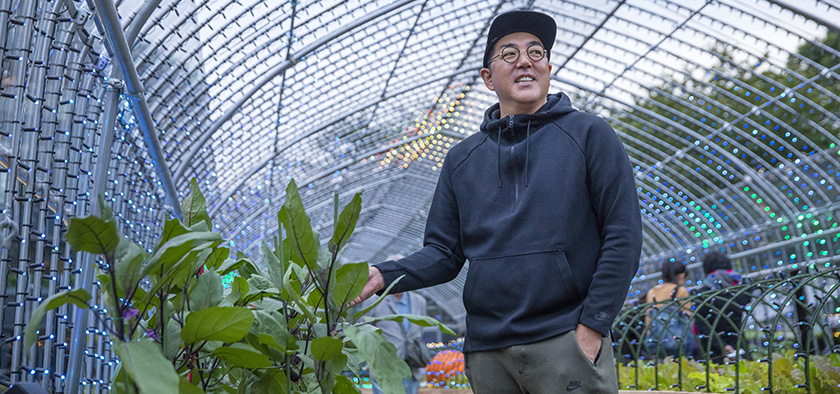
Attractive cities play with people physically.
I visited Tokyo for the first time when I was in elementary school. I saw the highway over Roppongi in a school trip and got excited, thinking "how futuristic!" But I feel modern Tokyo is boring. After living here for 30 years I no longer get excited. Maybe I got tired of it.
I love Los Angeles now. I think the reason for that is there are 'more chances to play with the city' than in Tokyo. The weather is so nice and you would like to take a walk. When you walk, you see many muscly women running up and down the stairs for fitness. I like it because it makes me feel like I am playing with the city physically.
While I was walking around looking at the city of Los Angeles, I started to wonder about the meaning of a city. What meaning do cities have at the time when you can buy food, commodities or fashion on internet?
If you walk in a city, you meet and find people and things. You may find wonderful music in a music store you wandered in, or you may see a new trend in the clothes of passers-by. In short, you get access to so much information when you go out in a city. The meaning of cities is this interactive contacts.

Los Angeles
A city in California in the United States of America. The weather is comfortable all year with not much rain. The city is also known for having the most yoga practitioners in the US and being strongly health-oriented. Hollywood in Los Angeles is a heavy weight for information transmission, starting with the movie industry. Los Angeles is currently ranked 8th in 'Global Cities Index' by A. T. Kearney, a global management consulting company in America.
Hoping to create bike lanes under Shutoko highway as the contact point of people and the city.
I liked Portland, which is known as a 'walkable city,' very much. The city is compact and well designed for easy access to public spaces and streets. In Japan, Kyoto also is a compact, walkable and bikable city. They both have an easy-to-move structure and have an environment you can create the contact points of people and the city.
But Tokyo is wide spread and does not have that structure. My solution is to create bike lanes under Shutoko highway. Tokyo right now is not very bikable and when you move by trains, it is not easy to find contact points to the city. If you can make it more bikable, you may be able to enjoy various areas in Tokyo while you are moving.
The ideal would be that of Shimanami Kaido in Shikoku, Japan, which is famous for the rarity of traffic accidents as a bike lane. We could make a speedy bike lane under Shutoko highway. If you can move from an area to another, there will be many access points in each area. Then you can always play with the city.
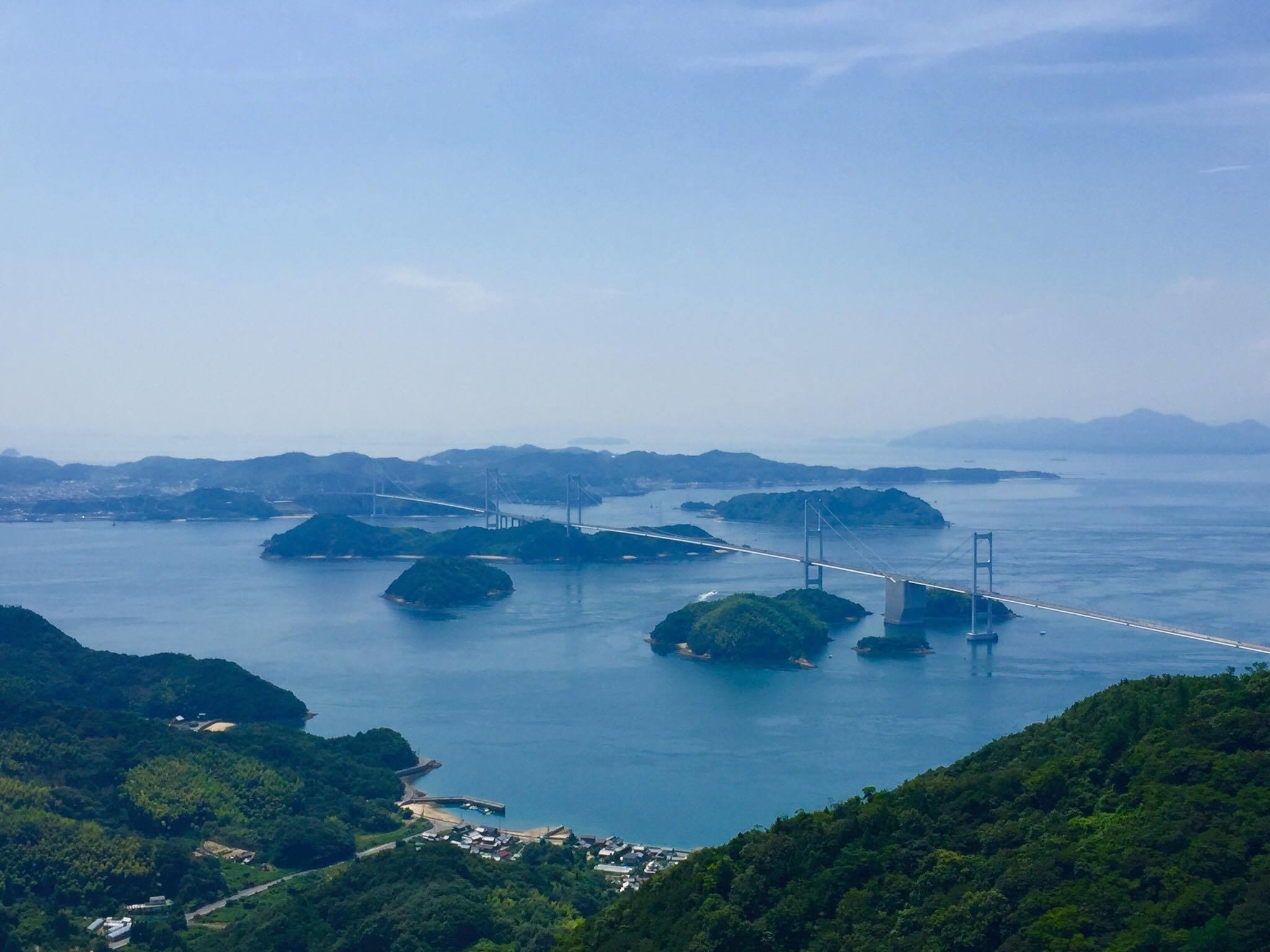
Shimanami Kaido
The nickname for the Nishiseto Expressway which links Onomichi, Hiroshima Prefecture with Imabari, Ehime Prefecture. It is a 60 kilometer-long highway that links the islands of the Seto Inland Sea with 9 bridges. The most significant feature is that there is a pedestrian walkway and you can walk or cycle across the bridges. It is well-known as a world-class cycling course and was selected '7 best bike routes in the world' by CNN.
Design the transfer and enjoy the city.
Of course, I would like also for the commute by car to be more comfortable, not only for bikes or pedestrians. I would like to buy a self-driving Tesla as a company car and have a meeting in the car while moving. Because Tesla is sponsored by Google, it has functions such as video chat through Google Hangouts using Bluetooth or Google Docs that works as a blackboard and a minute. It has the best environment to have a meeting in the car. We still have some regulations now. I am hoping to be able to use the boring transit time more productively in the future while letting the car drive by itself.
It will also be wonderful to see movies or bring entertainment in cars, not just meetings.
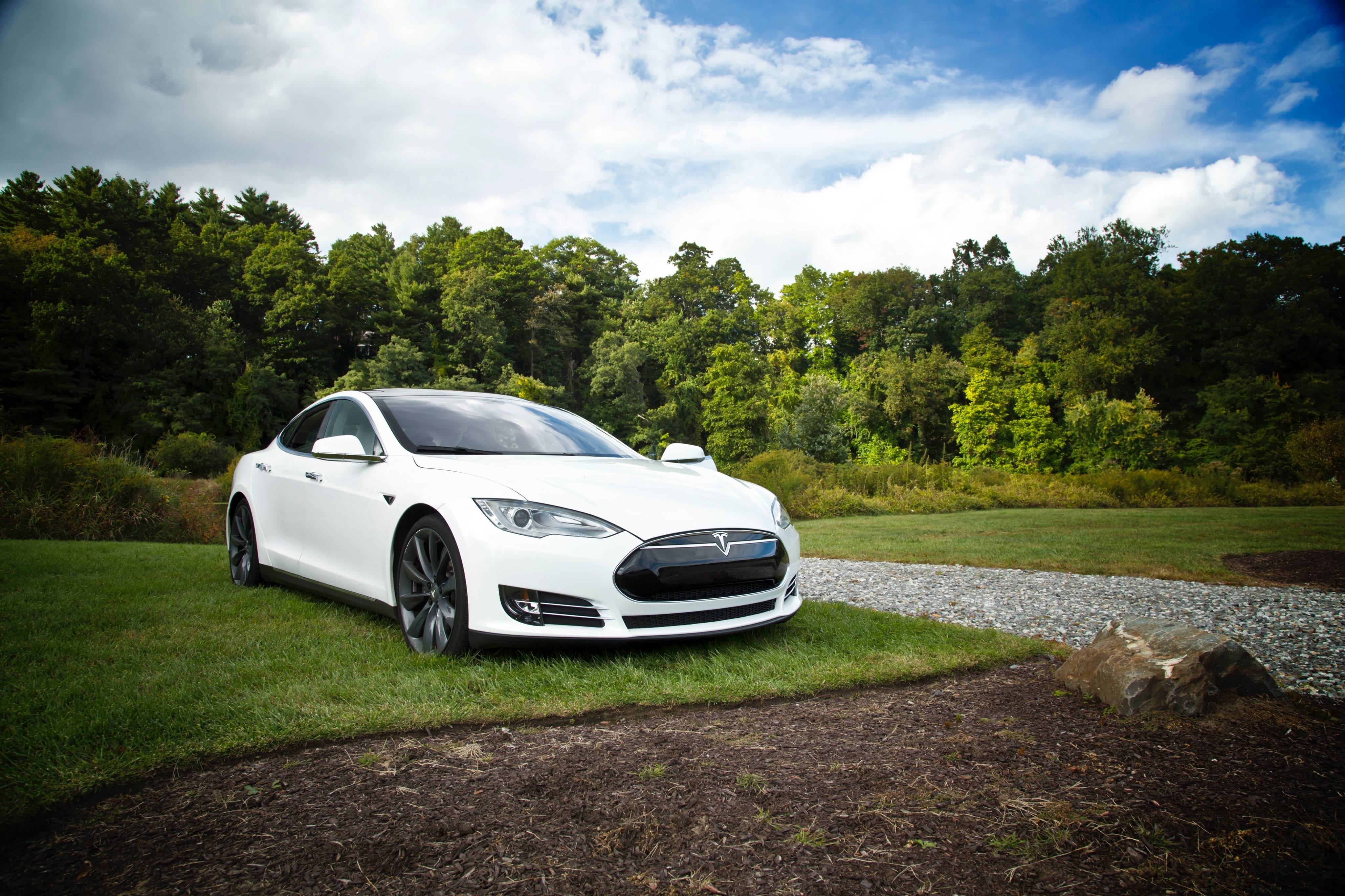
Tesla
An American car company that develops, manufactures and sells battery-operated electric cars and related products based in Silicon Valley. It is attracting global attention with the global entrepreneur Elon Musk as its CEO, sponsored by Google and eBay. Toyota agreed to business and financial tie-up in Japan.
I drive to work, so I am willing to be the guinea pig! When it is realized, I think everyone can enjoy the city of Tokyo. It is important for artists to keep on dreaming.
In America, people have already started to change the transit on their own. On Golden Gate Bridge in California, drivers suffering from the traffic jam raise hands asking ride share of other drivers. I believe there will be more means to make the transit richer in near future, not just for cars.
The charm of Tokyo is its chaoticness, and Roppongi should be creative and in the center of it.
You can make a city more attractive by somehow making the transit rich. One of the means is to declare a special creative district. Roppongi has the possibility.
There were movements to make Roppoingi a special creative district before. However, to declare a special district, you need to work with the government. The government would give permission if there are evidences of, for example, stimulation of economy, but no one has succeeded to prove that the creativity will directly stimulate the economy. Therefore the movements could not survive the harsh restrictions and people could not realize their creative ideas into reality.
I think the charm of Tokyo is its 'chaoticness.' The skyscrapers in Tokyo are standing on the ground which was the burnt field of World War II. The looks of the city is so different from one area to another. That chaoticness is so Tokyo-esque. Roppongi used to be a base of culture, centering around Aoyama Book Center or Cine Vivan Roppongi, but it is changing to a neoned streets with many clubs.
Cine Vivan Roppongi
A movie theater which was located in the basement of a commercial building Roppongi WAVE in Roppongi, Minato-city, Tokyo. Opened in 1983 when the building opened. One of the leading art film theaters in Japan, it showed many European art films by Godard and Rohmer among others. Closed in 1999. It attracted many young, cultural-oriented people in 80's and 90's.
You could permit the flight drones or ease the restrictions on advertisements in Roppongi for example. If you make townscape rules for art and design specifically, you would be able to do a project such as 'BIG SHADOW PROJECT' in Tokyo Midtown too.
If Tokyo's attitude become 'Anything Goes' and the city become as the larger version of Shinjuku Golden Street, Tokyo would be more attractive. Roppongi, the most creative area in Tokyo, should be the center of it.
Editor's thoughts
'Touch' leaves or stems, firmly or delicately. When you change the way you touch them, vegetables will show you many different faces. "Digital Vegetables" installation showed you how Ito understands interactive. He predicted the future when "trees on the streets of the city would be digitalized (by the development of GPS)". "Digital Vegetables", that combined the city and media born in Roppongi may be the seed of that future. (text_ryoh hasegawa)




